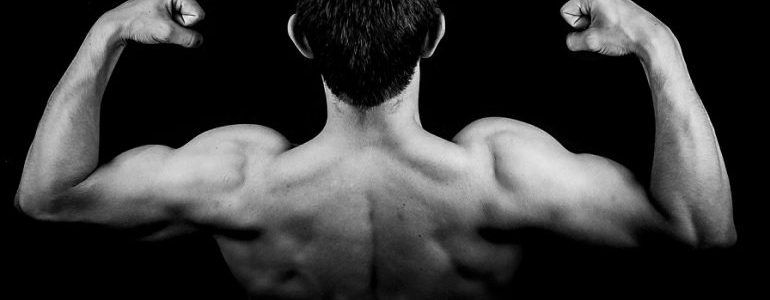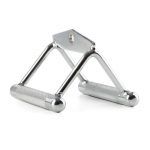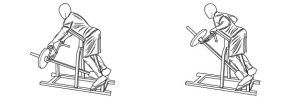
Yesterday I published a post in which I explained the best exercises for rowing with one arm. In this post I am going to talk to you about two-hand rowing.
In this category you will find the classic rowing exercises. All of them are good for widening your back, so I recommend that you try them all and stick with those that give you the best results.
Two-hand rowing exercises
barbell row
This is an exercise that requires some control over our body and it may not suit some of you. It is an exercise that offers great results but is not very popular compared to the two-handed low pulley row or the one-handed dumbbell row because these two alternatives are more comfortable.
With the legs semiflexed and with a width slightly greater than the width of the shoulders, we must place the trunk practically parallel to the ground. The grip on the bar can be with double pronation or double supination, the latter being more like a row with a low pulley.
Rowing with low pulley
 The low pulley row is, along with the one-arm dumbbell row, the king of rows. Perhaps it is because of the comfort it implies or perhaps it is because of the high load that we can move, but what is clear is that we all love rowing with a low pulley.
The low pulley row is, along with the one-arm dumbbell row, the king of rows. Perhaps it is because of the comfort it implies or perhaps it is because of the high load that we can move, but what is clear is that we all love rowing with a low pulley.
The platforms to place your feet on, the flat bench to sit on, and the simplicity of the exercise leave little room for imagination as to how the exercise should be performed. However, there are some keys when it comes to perfecting the technique:
On the pulley we must place a triangular-shaped accessory with a double grip. The legs should maintain the same angle of flexion throughout the exercise. In this oar we must bring the pulley to the height of the navel.
As you move the weight up through the exercise, a slight rocking of the body back and forth as a small push is acceptable, but remember that the greater the swing push, the less the latissimus dorsi will be stressed.
T-Bar Row
 In this case, the machine forces you to place yourself in a certain position, so there is no room for explanations about the technique.
In this case, the machine forces you to place yourself in a certain position, so there is no room for explanations about the technique.
If your gym does not have this machine, the following exercise will serve as a substitute.
Corner Bar Row
This is an exercise that I really like and that I always include in my back routine. We support one end of the bar in one corner and place discs on the other end. The trunk must be practically parallel to the ground and both the body and the legs must maintain the same angle of flexion throughout the exercise to concentrate the work on the dorsal muscles.
We place the bar between our legs, so the range of travel of the bar is, vertically, from close to the ground to practically colliding with our body. There are several possibilities for the grip.
If we do not use any accessory, one hand must go in front of the other when picking up the bar. However, to avoid possible asymmetries I like to use the same accessory that we saw for the low pulley row.